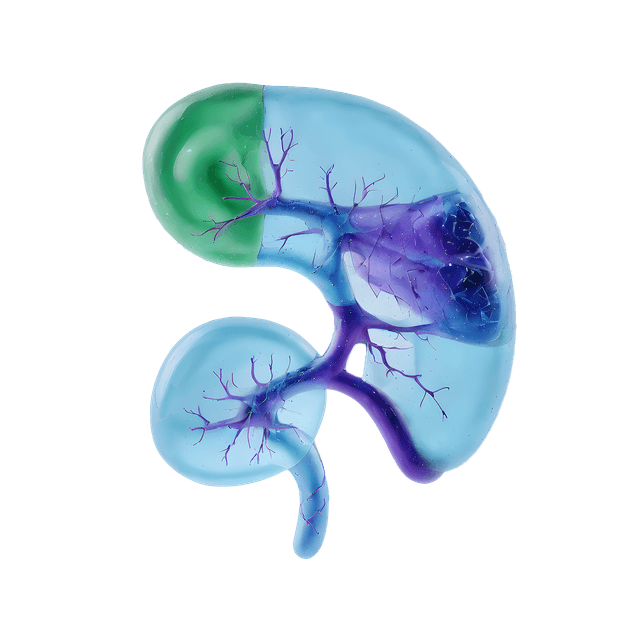Ceruloplasmin (S-Ceruloplasmin) is a copper-binding protein synthesized in the liver and released into the bloodstream. The analysis is commonly performed to evaluate copper metabolism and investigate suspected copper deficiency or specific hereditary disorders affecting copper regulation, such as Wilson's disease and Menkes disease. Ceruloplasmin is also a slow acute-phase protein that can increase during inflammation.
S-Ceruloplasmin plays a central role in copper transport and iron metabolism. It binds most of the body's copper and participates in oxidation processes critical for normal cellular function. Low levels of S-Ceruloplasmin may indicate copper deficiency or an underlying condition affecting copper metabolism. Copper deficiency can result in symptoms such as anemia due to impaired iron metabolism, neurological issues like sensory disturbances, balance problems, and muscle weakness. Additionally, osteoporosis and brittle bones may occur as copper is essential for collagen formation, and some individuals may experience cardiac symptoms or a weakened immune system as a result of deficiency.
Elevated levels of S-Ceruloplasmin are often associated with inflammation, estrogen influence, or cholestasis. These conditions may sometimes cause symptoms related to the underlying cause, such as fatigue and pain during inflammation or hormonal changes affecting fluid retention and mood. In cholestasis, liver-related symptoms such as jaundice and itching may occur. However, in most cases, it is the underlying condition rather than the ceruloplasmin levels themselves that cause symptoms.
As S-Ceruloplasmin is an important marker for copper balance in the body, deviations should always be assessed in a broader clinical context. Complementary tests, such as S-Copper and liver function tests, can provide additional information and guide further investigation and treatment.
Analysis of S-Ceruloplasmin
S-Ceruloplasmin is used in various clinical settings, including:
- Identifying copper deficiency, both hereditary and acquired.
- Investigating suspected Wilson's disease, a hereditary disorder causing copper accumulation in the body.
- Assessing inflammatory conditions affecting ceruloplasmin levels.
- Monitoring patients with liver disease or other conditions affecting copper metabolism.
Ceruloplasmin and copper metabolism
Normal levels of S-Ceruloplasmin are crucial for proper copper metabolism. Low levels can impair the body's ability to transport copper, potentially leading to neurological and liver-related symptoms. In Wilson's disease, a genetic defect in copper excretion, markedly low ceruloplasmin levels are often observed.
Applications of S-Ceruloplasmin
Diagnosis of conditions related to copper and inflammation:
- Copper deficiency: When malabsorption, insufficient copper intake, or prolonged parenteral nutrition is suspected.
- Wilson's disease: As part of an investigation into suspected copper accumulation in the liver and other organs.
- Menkes disease: A rare genetic disorder affecting copper absorption.
- Inflammation: To identify slow elevations in acute-phase proteins.
How S-Ceruloplasmin is analyzed
Analysis of S-Ceruloplasmin is performed using a blood sample collected under standardized conditions. The sample is analyzed using immunological methods such as:
- Nephelometry: To measure protein levels in the blood.
- Immunochemical techniques: To ensure accuracy and reproducibility.
Results should always be interpreted in relation to the clinical picture and any other relevant laboratory tests.
Reference ranges and interpretation of S-Ceruloplasmin
Reference ranges for S-Ceruloplasmin vary by gender and can be used to identify abnormalities in copper metabolism:
- Women: 0.16–0.45 g/L
- Men: 0.15–0.30 g/L
Abnormal levels of S-Ceruloplasmin provide important information about underlying conditions:
- Normal levels: Indicate sufficient copper transport and the absence of significant metabolic abnormalities. Normal values often confirm proper copper regulation in the body.
- High levels: Typically observed in conditions such as inflammation, where S-Ceruloplasmin acts as a slow acute-phase protein. Estrogen influence, such as during pregnancy or oral contraceptive use, can also elevate levels. Additionally, cholestasis, a liver disorder affecting bile flow, can result in high levels.
- Low levels: May indicate copper deficiency due to malabsorption, intestinal disorders, insufficient copper intake, or prolonged parenteral nutrition. Genetic disorders, such as Wilson's disease and Menkes disease, also negatively affect levels. Other factors, such as penicillamine therapy or liver failure, can cause reduced ceruloplasmin levels.
To ensure accurate interpretation of S-Ceruloplasmin, results should always be considered in the context of the patient's clinical picture, other laboratory tests (e.g., S-Copper), and any ongoing medication or underlying conditions.



















